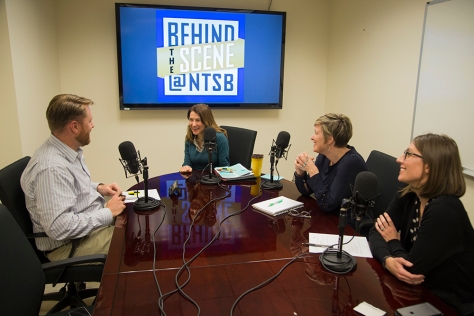On July 17, 1996, about 12 minutes after takeoff from John F. Kennedy International Airport, New York, Trans World Airlines (TWA) flight 800 (TWA-800), a Boeing 747-131, crashed in the Atlantic Ocean near East Moriches, New York. The accident killed all 230 people on board, and the airplane was destroyed. The NTSB’s investigation of this accident was the most extensive, complex, and costly air disaster investigation in US history, and was the subject of high public interest and front-page headlines for years.
On August 23, 2000, a little more than 4 years after the crash, the NTSB determined the probable cause to be an explosion of the center wing fuel tank (CWT), resulting from ignition of the flammable fuel/air mixture in the tank. Because multiple potential sources were identified, the singular source of ignition for the explosion could not be determined with certainty, but the likely source was a short circuit outside of the CWT that allowed excessive voltage to enter the vapor-laden fuel tank through the fuel-quantity–indicating system in the CWT.

On December 13, 1996, while the investigation was still ongoing, the NTSB issued the first of three sets of safety recommendations to the FAA. We based these initial recommendations on early findings of the investigation to address the threat of a fuel tank exploding on an airliner. Two recommendations included the development of design or operational changes to prevent explosive fuel-air mixtures in the fuel tanks—including the development of nitrogen-inerting systems. A nitrogen-inerting system replaces the air in an empty fuel tank with nitrogen, creating an environment in which neither a fire nor an explosion can occur. A total revision to FAA regulations for wiring and maintenance, including those of fuel-quantity–indicating systems, also resulted from our findings in this accident investigation.
The FAA’s initial response to our inerting recommendations was to convene a group of industry experts, who found that the costs of implementing the recommendations was too high to be practical. We disagreed and urged the FAA to consider other options. The FAA tried again, tinkering around the edges of the problem, focusing on the wiring and electrical systems in aging aircraft. We welcomed these improvements but reiterated that the agency was ignoring the core issue—the hazard posed by potentially explosive aircraft fuel tanks. To its credit, the FAA chose to apply some “out of the box” thinking, and, together with Boeing, developed a system on the airplane to address the threat.
That innovative technology, called a molecular sieve, separates air into nitrogen and oxygen, the two primary gases. The oxygen is vented overboard while the nitrogen is used to inert the fuel tank. The FAA performed in-depth analysis of the technology, and Boeing produced several prototype systems for testing and evaluation. These tests showed the system to be effective, have minimal operational challenges, and to be reasonably priced. Boeing began installing these systems on some of the new airplanes it was producing.
On November 23, 2005, the FAA proposed a new regulation that required newly manufactured and in-service airliners to reduce the chances of a catastrophic fuel-tank explosion. A final rule was enacted by in 2008, and 100 percent compliance with the rule became mandatory on December 26th of 2017—21 years after the NTSB first recommended fuel-tank inerting to the FAA.
The enactment of the fuel-tank flammability rule is a major safety improvement, addressing a critical safety problem at the heart of many aviation accidents over 45 years. However, its enactment was clearly far from easy; it took the persistent advocacy of the NTSB and the efforts of FAA and Boeing staff unsatisfied with cursory cost-benefit analyses. It took the commitment of senior management at the FAA and DOT—including the Director of the Certification Service, Associate Administrator of Safety, the FAA Administrator, and the Secretary of Transportation—to implement this needed safety regulation.
The traveling public is safer today because these organizations, working together, refused to take “no” for an answer.
















